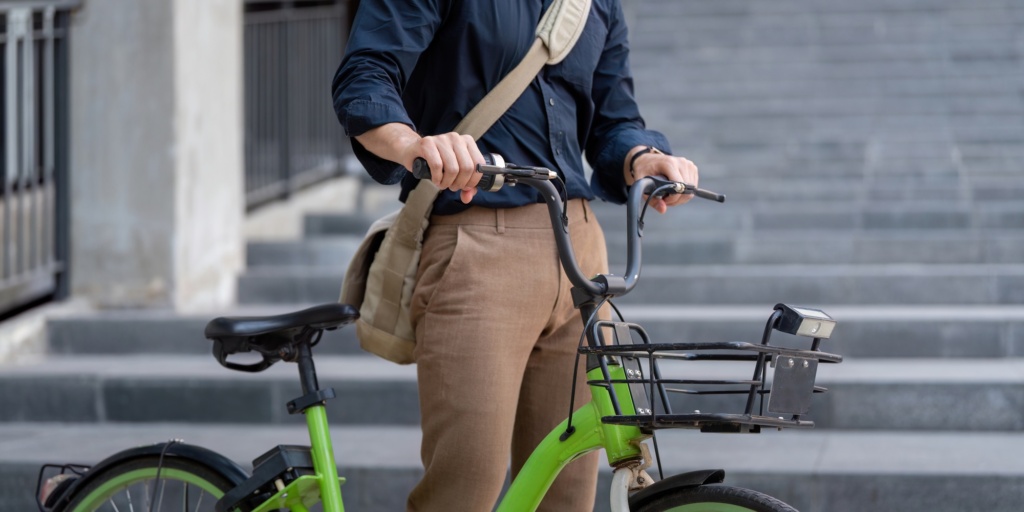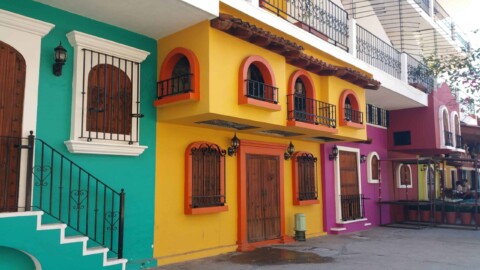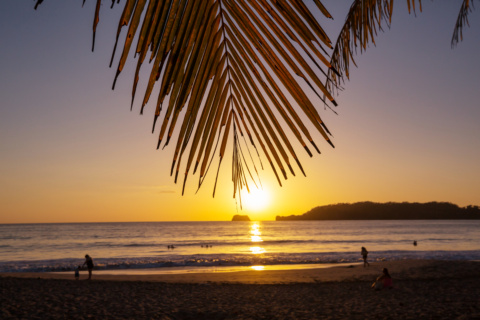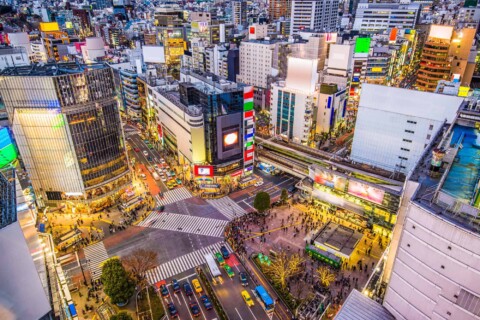Let’s be honest—tourism is broken. We’ve all seen the videos of angry locals spraying tourists with water guns in Barcelona, or the endless lines at the Trevi Fountain that make you question why you even bothered to travel. But here’s the thing: while everyone’s complaining about overtourism, some pretty smart people are already figuring out how to fix it.
And the solutions? They’re way cooler than you might think.
Stop Taking, Start Giving: The “Leave It Better” Movement
Remember when your parents told you to leave a campsite better than you found it? Well, some destinations are applying that same logic to entire cities and countries. It’s called regenerative tourism, and it’s basically the opposite of those spring break trips where you trash a place and leave.
Take Bonito, Brazil. This place figured out how to become completely carbon neutral while hosting thousands of tourists who come to see its crystal-clear rivers and incredible wildlife. How? Every tourist dollar goes directly into conservation projects. Visitors aren’t just looking at nature—they’re actively helping restore it.
New Zealand has taken this concept and run with it. Instead of treating Māori culture like a tourist attraction, they’ve created programs where visitors actually help preserve indigenous languages and traditional crafts. You get an authentic cultural experience, and the community gets support for maintaining their heritage. Win-win.
The best part? Tourists love it. People, especially younger travelers, want to feel like their trips matter. They’re willing to pay more and stay longer when they know they’re contributing to something meaningful rather than just taking selfies and leaving.
Tech to the Rescue: Making Smart Choices Easy
Here’s where things get really interesting. Technology isn’t just creating the overtourism problem—it’s also solving it in ways that would have seemed like science fiction just a few years ago.
Picture this: you’re planning a trip to Rome, and instead of just showing up and hoping for the best, an app tells you exactly when the Colosseum will be least crowded, suggests alternative ancient sites that are just as impressive but way less busy, and even offers discounts for visiting during off-peak times. That’s not the future—that’s happening right now.
Some cities are using AI to predict where crowds will form before they actually gather. It’s like having a crystal ball for tourist traffic. When the system sees that the Spanish Steps are about to become a nightmare, it automatically sends push notifications suggesting people check out the equally beautiful but less famous Aventine Hill instead.
Virtual reality is also stepping up in a big way. You can now “climb” Everest or “explore” the Great Barrier Reef without the massive carbon footprint. Sure, it’s not exactly the same as being there, but for a lot of people, it scratches the travel itch while giving the real places a chance to breathe.
Money Talks: Making Sustainability Profitable
One of the smartest things destinations are doing is making sustainable tourism more profitable than the mass tourism free-for-all. And here’s the kicker—it’s working.
Amsterdam figured this out early. They basically said, “If you want to party here and trash our city, it’s going to cost you.” Their tourist tax can hit 12.5% of your accommodation cost. Sounds harsh, right? But the money goes directly into making the city better for residents, and the higher prices naturally filter out the tourists who were just looking for a cheap party destination.
The result? Amsterdam is getting fewer but higher-quality tourists who stay longer and spend more. Local businesses are thriving, residents are happier, and the city’s infrastructure isn’t constantly overwhelmed.
Venice took it even further with their day-visitor fee. It’s like a cover charge for the city—if you just want to hop off a cruise ship for a few hours and take some photos, you pay extra. But if you’re staying overnight and contributing to the local economy, you get a break.
The sustainable tourism market is expected to hit $5.67 trillion by 2028, growing at about 15% per year. That’s not activist wishful thinking—that’s serious money chasing real opportunities.
Getting Creative with Where People Stay
Traditional hotels are so last century. The destinations that are nailing sustainable tourism are getting creative with accommodation in ways that benefit everyone.
Homestay networks are exploding, and not just because they’re cheaper. Staying with a local family gives you insights into real daily life that no fancy hotel can provide. Plus, the money goes directly to local people rather than international hotel chains.
Some places are experimenting with “nomad villages”—basically co-living spaces designed for people who want to stay somewhere for a month or more. These spots include workspace areas for digital nomads, language exchange programs, and community activities that help visitors integrate temporarily into local life.
Rural areas are getting in on the action too. Agritourism operations let you stay on working farms, help with daily activities, and experience agricultural life firsthand. You get an authentic experience, farmers get extra income, and the pressure on overcrowded cities decreases.
Timing Is Everything: Spreading Out the Crowds
Here’s a simple but genius idea: what if we could convince people to travel when everyone else isn’t? Some destinations are offering such good deals during their “slow” seasons that it’s actually cheaper to take that European vacation in February than in July.
Portugal has been particularly smart about this. They offer significant discounts on everything from hotels to museum entries during winter months, market their mild winter weather, and promote activities that are actually better when it’s not blazing hot outside.
Japan has mastered the art of promoting alternative destinations. Instead of everyone cramming into Tokyo and Kyoto, they’re actively marketing rural areas with incredible culture, food, and nature experiences. Turns out, when you get away from the tourist crowds, you often find the most authentic experiences.
Some countries are even experimenting with lottery systems for popular attractions during peak times, while offering guaranteed access during off-peak periods. It’s like concert tickets—if you’re flexible about when you go, you get better access and lower prices.
Local Power: Putting Communities in Charge
The destinations that are succeeding at managing tourism have one thing in common: they’ve put local communities in the driver’s seat instead of letting tourism companies make all the decisions.
Community tourism councils with real power to say “no” to developments that don’t benefit locals are becoming more common. These aren’t just advisory groups—they have actual authority over tourism licenses, development permits, and resource allocation.
Local ownership requirements are also gaining traction. Some places now require that a certain percentage of tourism businesses be owned by local residents. This keeps profits in the community and ensures that tourism development aligns with local values and needs.
Training programs help locals start their own tourism businesses rather than just working for international companies. A local guide who owns their own tour company has way more incentive to provide authentic experiences and protect their community than someone working for a faceless corporation.
Transportation That Doesn’t Suck
Getting around destinations sustainably is becoming easier and more convenient, not harder. Electric bike networks let you cover more ground than walking while creating zero emissions. E-scooter systems provide last-mile transportation that’s actually fun to use.
Some cities are creating tourist transportation passes that include everything from metro rides to bike rentals to electric boat trips. It’s convenient for visitors and reduces the chaos of everyone trying to figure out different transportation systems.
High-speed rail networks are making overland travel competitive with flying for many routes. That overnight train from Paris to Vienna isn’t just more sustainable—it’s actually a pretty awesome experience that saves you hotel costs while you sleep your way to your destination.
Education That Actually Works
The most successful destinations aren’t just managing tourists—they’re transforming them into better travelers. Pre-arrival education programs teach people about local customs, environmental considerations, and cultural sensitivities before they even pack their bags.
Some places are requiring tourists to complete brief online courses about local culture and environmental protection before issuing travel permits. It sounds bureaucratic, but the courses are actually interesting, and tourists report feeling more prepared and confident about their visits.
Language exchange programs pair tourists with locals who want to practice English (or other languages) while teaching visitors basic phrases in the local language. These connections often lead to genuine friendships and ongoing cultural exchange that lasts long after the trip ends.
Small Changes, Big Impact
Sometimes the best solutions are the simplest ones. Encouraging tourists to visit attractions early in the morning or late in the afternoon can dramatically reduce midday crowding while providing better lighting for photos anyway.
Promoting longer stays in fewer places reduces transportation emissions while increasing economic impact per visitor. Someone spending a week in one city contributes way more to the local economy than someone rushing through five cities in the same timeframe.
Group size limits for tours make experiences better for everyone while reducing the impact on narrow streets and small attractions. A group of eight people can have meaningful conversations with a local guide; a group of thirty is just a moving crowd.
The Unexpected Benefits
Here’s what’s really exciting about these solutions: they’re not just fixing problems—they’re making travel better for everyone involved. Tourists get more authentic experiences, locals benefit economically without being overwhelmed, and destinations preserve what makes them special in the first place.
Places that have implemented smart tourism management report higher visitor satisfaction despite (or maybe because of) having fewer tourists. When you’re not fighting crowds for that perfect photo, you can actually enjoy where you are.
Local residents in these destinations report feeling more positive about tourism when they see direct benefits from it and when tourists behave respectfully. The antagonism between visitors and locals starts to dissolve when tourism feels like partnership rather than invasion.
The Ripple Effect
The coolest thing about destinations that get this right is that they inspire others to follow suit. When Barcelona or Amsterdam shows that you can reduce tourist numbers while increasing tourism revenue, other cities pay attention.
Tourists who have great experiences with sustainable tourism become advocates for it, choosing destinations based on their sustainability practices and sharing their positive experiences on social media. The same viral effects that created overtourism can be harnessed to promote better tourism.
Travel companies are starting to compete on sustainability credentials rather than just price and convenience. This market pressure is driving innovation across the entire industry, from airlines investing in sustainable fuels to hotels implementing regenerative practices.
What You Can Do Right Now
The transformation of tourism isn’t just up to governments and big companies—individual travelers have enormous power to drive change through their choices.
Choose destinations that are actively working on sustainability rather than just those with the most Instagram-worthy spots. Stay longer in fewer places. Learn a few phrases in the local language. Eat at locally-owned restaurants instead of international chains. Book directly with local accommodation providers when possible.
Support tourism businesses that employ local people and contribute to community development. Leave reviews that highlight sustainable practices and authentic cultural experiences rather than just convenience and luxury.
The Bottom Line
The overtourism crisis isn’t going away on its own, but the solutions are already here and they’re working. Destinations that embrace innovation, put communities first, and focus on quality over quantity are creating tourism models that benefit everyone involved.
The future of travel isn’t about limiting who can go where—it’s about making tourism so much better that the old mass tourism model starts to look ridiculous by comparison. When visiting a place means contributing to its preservation and prosperity rather than just consuming its attractions, everyone wins.
We’re already seeing glimpses of this future in destinations around the world. The question isn’t whether sustainable tourism can work—it’s whether we’ll choose to embrace it before the crisis gets worse. The early adopters are already reaping the benefits. The question is: will your next destination be one of them?








